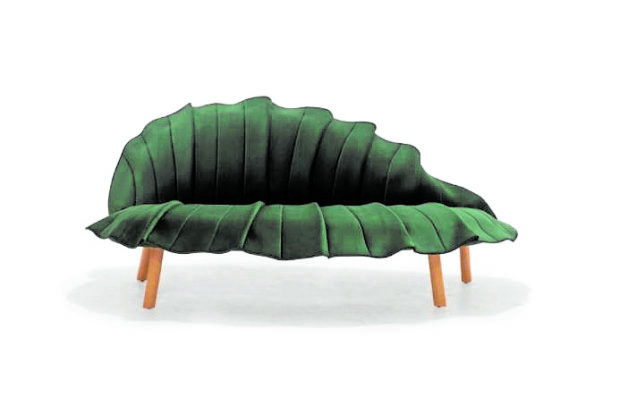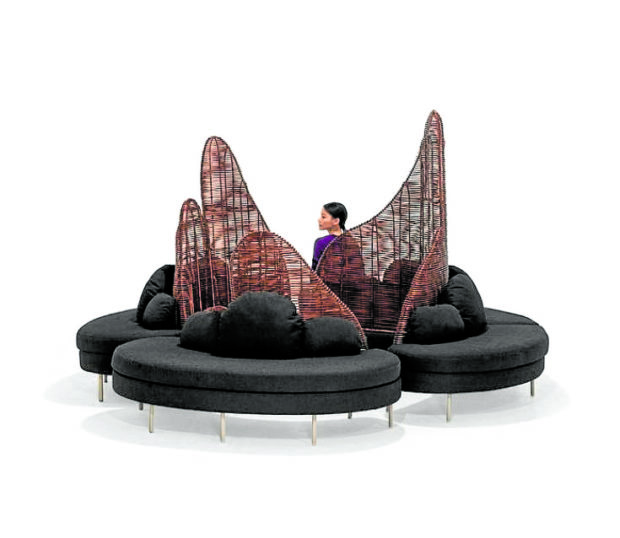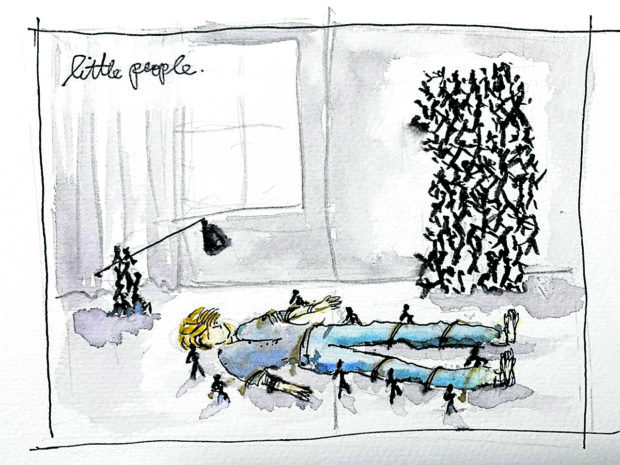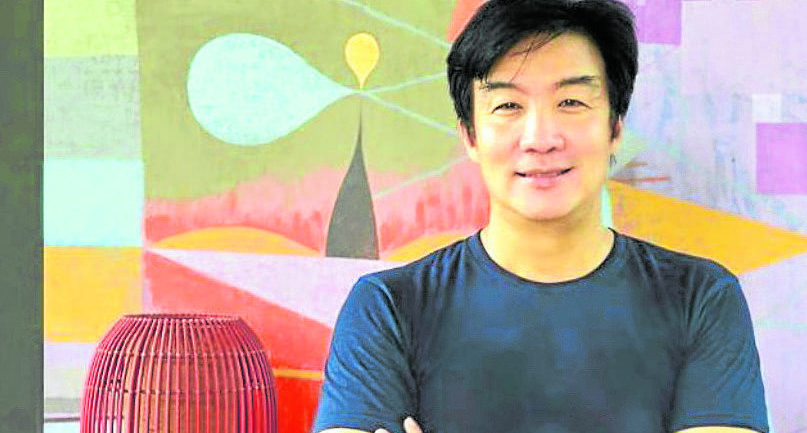
Global Filipino designer Kenneth Cobonpue must be one of the very few who honestly see the upside to this pandemic.
He sees the forced stoppage as a time to take stock—not only of his product inventory, or his design output, but also of his brand’s strength, as well as where he is in life.
Cobonpue is one designer who has become a global brand, his furniture and other designs known to be in the homes of celebrities such as Brad Pitt. His designs have met critical and commercial success, having bagged international awards through the years and having bannered annual trade expositions, particularly in Europe and the United States.
A growing number of Filipinos today who are hooked on K-Drama may not know it, but Cobonpue furniture shows up now and then in K-Drama series, obviously not as promotion for the brand but as legitimate sourcing of production designers. (Spot his red Bloom chair in the classic “Oh My Venus.”) Interestingly, Cobonpue himself wasn’t fully aware of this until his K-Drama-watching friends told him.

It is amazing how the pandemic has made Cobonpue go back to watercolors, using the medium to re-storify his design, so to speak.
Also, find out what is the first thing he’ll do when we’re past this pandemic—this passionate collector of vintage cars.
Cobonpue in an email interview with Lifestyle:
What has the pandemic done to your mind, your design and your business? This pandemic gave me a lot of time to reflect on my values and goals, not only personally but also for my brand.
We were so caught up with making new designs, trying to meet exhibition deadlines from Milan to New York, that we had no time to think if the world needed what we were making.
This pandemic was a much-needed breather for our team to reflect on who we are, what we were good at, and what our place in the world of design was. Working online has not been easy for the design team. Not everyone has the discipline to work from home, and while you can schedule Zoom meetings, you can’t schedule inspiration. We needed to touch the materials and experiment on them with our craftsmen.

We couldn’t build our designs, so we focused on the origin and story of our brand instead. We worked a year before with Anne-Flore Larraufie, a French brand expert who consults for Chanel and LVMH, on the foundations and characteristics of who Kenneth Cobonpue, the brand, was.
We met with our team twice a week to discuss and draw the storyboard of our new catalog that will present our products in the manner in which they were designed—full of fantasy, inspiration and bursting with fun.
Are their specific designs of yours that were put forward by this pandemic? Like your Alchemy. Or you spoke about the seamless blend of the outdoors and the indoors?We have never stopped production since the outbreak started, because we fortunately still have orders. Now that a lot of people spend more time in their homes, they realize what’s missing in their living room or decide to finally buy that piece they have always wanted.
People are spending more money for their home because they also spend more time in it. The home becomes not only a place of shelter and refuge for many of us, but also our workspace and recreational hub.

Doctors tell us to go outside, but not many have the luxury of having their own garden, so we try to bring the outdoors inside in many ways through design.
Aside from Bloom, the flower-shaped chair which has become a design classic, we have expanded the tropical theme into other pieces which include indoor garden planters, leaf-shaped sofas and rock-shaped coffee tables.
We have also brought back designs centered around the personal workspace.
Do you know that your designs such as the Bloom chair are featured in K-Drama? I am aware that a lot of my designs are in K-Dramas. I think the producers love the pieces because they look unusual. I confess I have never seen a single episode, though, and only get the news from friends and K-Drama fans.
My pieces have been featured in a lot of movies recently, including the latest John Wick film. I think it’s cool to design pieces that transcend cultures because that’s what the Filipino is known for. He can go anywhere in the world and be part of a foreign setting without losing his own nationality and character. I want my designs to have that same personality.
What lessons did you learn—personal, professional and design-wise—from this pandemic? This pandemic puts into question all our values. It makes us rethink everything that we are doing and makes all of us focus on what’s essential. I took a lot of relationships for granted because I was too busy.
This long pause from work gave me time to pick up the different loose threads of my life and mend them again.

It also gave me time to re-strategize goals and go over the company with a fine-tooth comb. We are going over what works and what doesn’t. We kept so many collections in our range over the years because they were important for the brand in terms of aesthetic or branding, without realizing many don’t sell. Deciding on their fate is a necessary debate that we can afford now because we have the luxury of time.
To illustrate my ideas for the new catalog, I bought sketchbooks and started doing quick watercolors, something I have not done since my college days in New York. The design team has been coming up with fresher and more exciting ideas, and I know it’s because they got a much needed break. I am confident that we will come out of this with a renewed passion and vigor that will propel the brand to greater heights.

What’s the first thing you want to do when and if this pandemic is over? All I want to do now is to take a long trip with the top down in a classic convertible, see the roads unfold before me with the promise of endless possibilities, and feel alive again. —TSS INQ














































